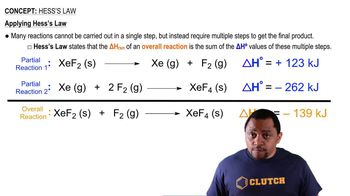Textbook Question
Niobium oxide crystallizes in the following cubic unit cell:What is the formula of niobium oxide, and what is the oxidationstate of niobium? (LO 12.5)(a) NbO, Nb = +2 (b) Nb2O, Nb = +2(c) NbO2, Nb = +4 (d) Nb2O3, Nb = +3
 Verified step by step guidance
Verified step by step guidance


